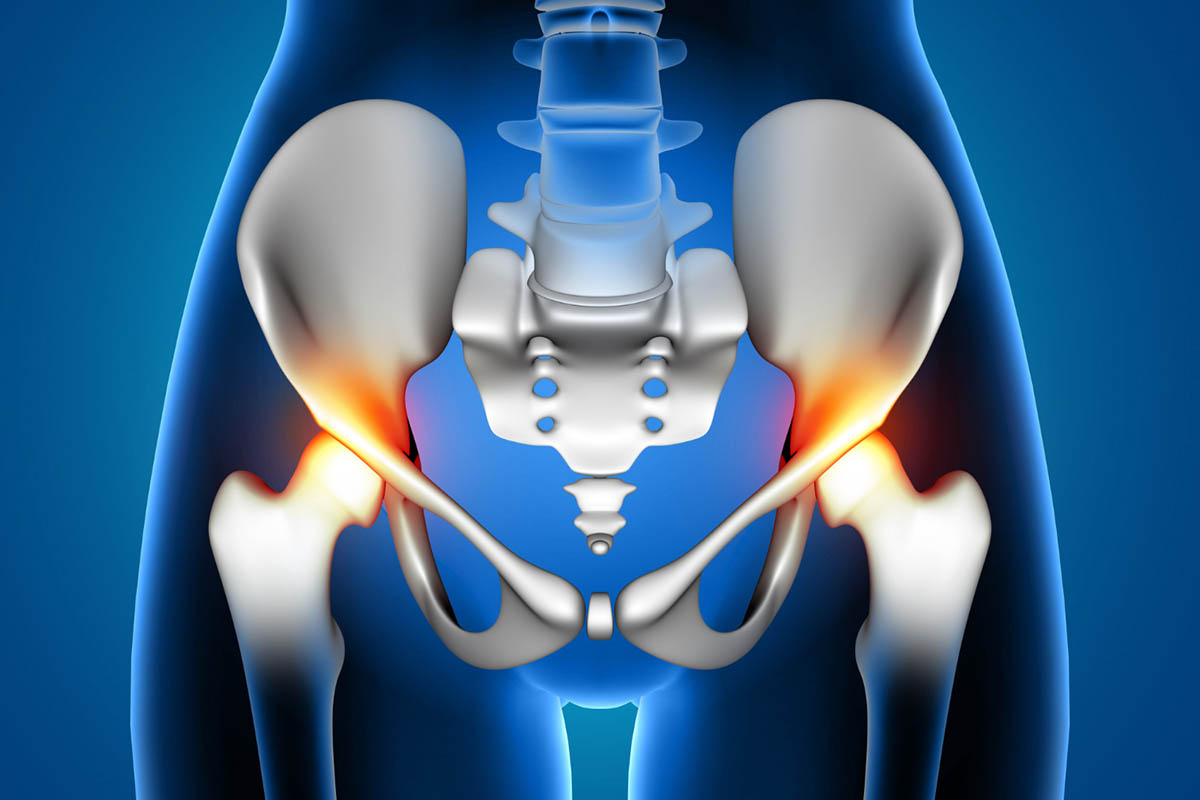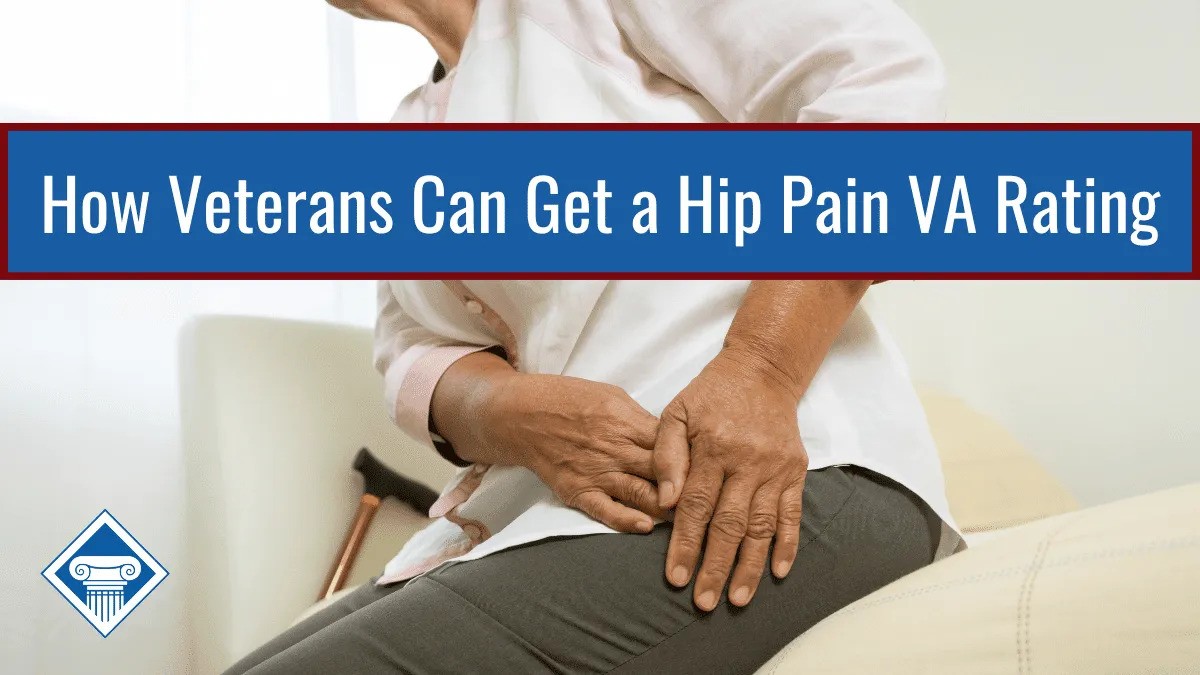Hip pain and conditions
Getting VA Disability for Hip Pain and Related Conditions
If you have hip pain due to your service, you deserve VA compensation. Hip pain may be caused by a variety of conditions recognized by the VA as disabling. This post explains VA hip pain ratings, some common conditions related to hip pain, and how the VA rates these conditions.
You don’t realize how much you use your hips for everyday tasks until they begin to hurt. Hip pain can make even regular movement extremely unpleasant. If you experience hip pain because of an in-service injury or related condition you developed because of your service, you may be eligible for VA disability compensation. That’s why it’s important to understand VA hip pain ratings.


Hip pain among veterans
You use your hips pretty much nonstop without even thinking about it. Each time you move your lower body or take a step, your hip is likely involved in the action.
Hip pain is common, with about 10% of adults saying they deal with it. However, studies have shown veterans may experience higher rates of pain, including severe pain, than the general population. At the same time, they may also have it more ingrained in them to ignore or minimize their own pain.
Pain can occur anywhere in the body but is common at the joints, especially after years of wear and tear. Hip pain occurs when you have pain or discomfort where your thigh bone connects to your pelvis.
Strenuous, ongoing physical activity and injury increase the likelihood of experiencing hip pain. That means veterans are prone to hip pain if they were injured during service or had a physically strenuous assignment.
Other causes of hip pain include various types of arthritis and bursitis. These conditions may have also developed because of an injury during service.
Hip pain VA ratings
VA ratings for hip pain depend on its cause and severity. Below is an overview of some causes of hip pain and how the VA rates them.
Ankylosis and range of motion of the hip
Many issues of the hip come down to stiffness, immobility, or limited range of motion in the hip.
The VA rates ankylosis of the hip using diagnostic code 5250 in the Schedule of Ratings as follows:
Description |
VA Rating |
Monthly Payment
|
|---|---|---|
Unfavorable, extremely unfavorable ankylosis, the foot not reaching the ground, crutches necessitated |
90% |
$2,2297.96 |
Intermediate |
70% |
$1,759.19 |
Favorable, flexion at an angle between 20 and 40 degrees and slight adduction or abduction |
60% |
$1,395.93 |
Veterans with less severe limited range of motion in their hip may be rated under diagnostic codes 5251-5255.
Arthritis in the hip
Arthritis causes joint pain and inflammation and is common for people to develop in their hips. If you have arthritis in your hips, you’ll likely experience pain, swelling, and stiffness in your hip joints.
The VA rates degenerative arthritis under diagnostic code 5003. When a veteran’s arthritis is more severe than the diagnostic criteria under 5003 allows for, the VA will instead give a rating based on limitation of motion at the joint. For arthritis in the hip, these ratings include diagnostic codes 5250 – 5255.
The following are the ratings for arthritis:
Description |
VA Rating |
Monthly Payment
|
|---|---|---|
X-ray evidence of involvement of two or more major joints or two or more minor joint groups, with occasional incapacitating exacerbations. |
20% |
$346.95 |
X-ray evidence of involvement of two or more major joints or two or more minor joint groups. |
10% |
$175.51 |
Arthritic pain in the hip may also cause a veteran to overcompensate using the healthier, stronger side of their body. This can cause additional joint and muscle issues in the opposite, better, leg.
TDIU for hip pain
In some cases, a veteran can be awarded total disability based on individual unemployability (TDIU) for their conditions causing hip pain. Veterans are eligible for this benefit if they can’t obtain substantially gainful employment due to their condition. TDIU may be granted for a veteran’s hip conditions alone or may be granted based on the combined effects of many service-connected conditions.
Hip pain can leave a veteran in almost constant pain and essentially immobile. It may keep them from performing work-related tasks like walking, standing, or sitting for long periods. Hip pain may also require medications for pain management which have disabling side effects. Veterans may also have even more difficulty working if they have additional service-connected conditions. When veterans apply for and are granted TDIU, they are compensated at the 100% disability rating level even though their condition is rated below 100%.
Veterans who can’t hold down a steady job that supports them financially (known as substantially gainful employment) because of their service-connected disabilities are considered eligible for TDIU if they have:
1
At least one service-connected disability rated at 60% or more disabling OR
2
Two or more service-connected disabilities with at least one rated at 40% or more disabling and a combined rating of 70% or more
How VA can help
Our VA-accredited attorneys have helped thousands of veterans nationwide who can no longer work because of their service-connected conditions. Call us today for your free, confidential TDIU case evaluation. You won’t pay us unless we win your claim.
